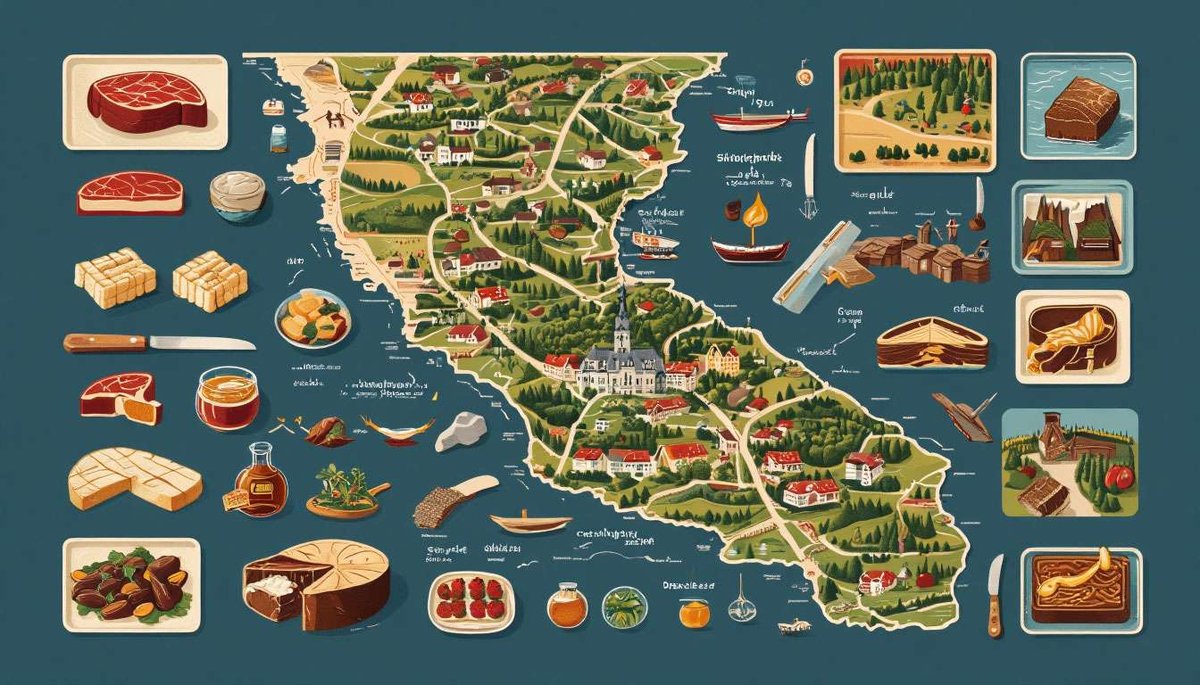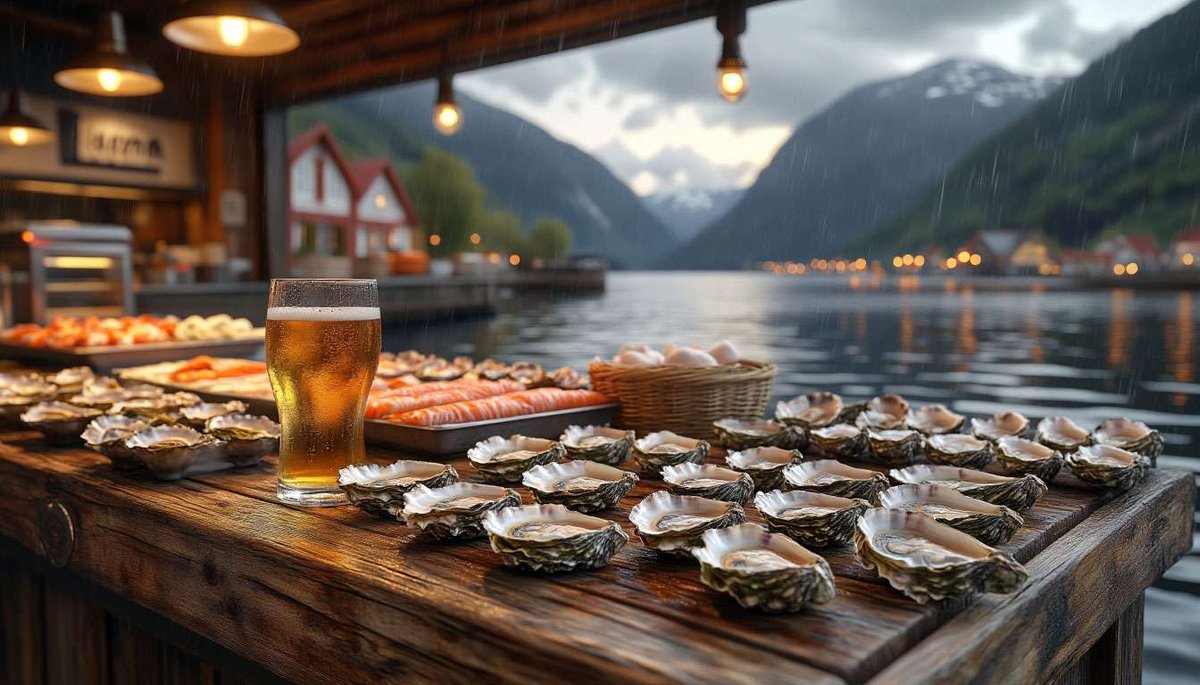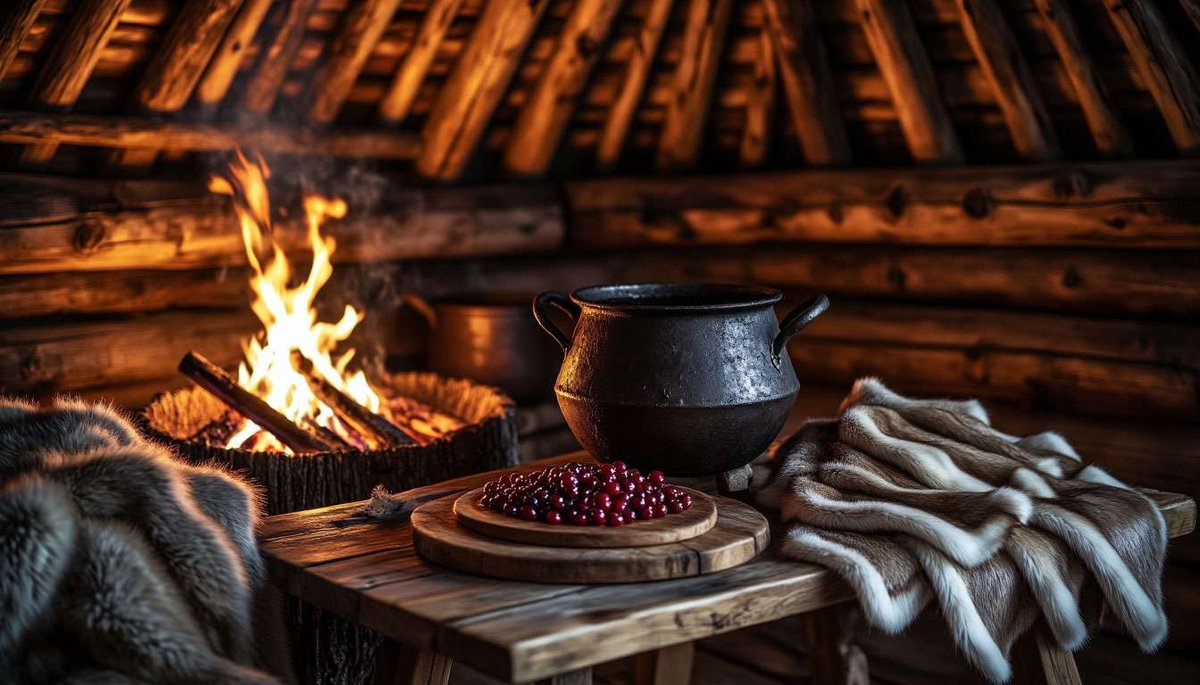The flavours of Norway by region: from the bright berries of the north to the ciders of the south coast

Norway stretches for almost two thousand kilometres, and each of its latitudes adds its own flavour to the overall gastronomy. Some places are dominated by the harsh winds of the Barents Sea, others by the fertile gardens of Hardanger; some regions are famous for lamb from the heather-covered slopes, others for sweet buns created for long rainy evenings. As you explore the regional characteristics, you will see how nature dictates the menu and history turns it into culinary legends.
What is Northern Norway (Nord-Norge) famous for and what should you definitely try?
The north encompasses Finnmark, Troms and Nordland, where the polar night coexists with seasonal abundance. In winter, cod is caught and made into dried stockfish and a strong fish soup with a hint of cloudberry sugar. In summer, pink northern shrimp reign supreme on the coast, served on fresh bread with mayonnaise and lemon. The main star on land is reindeer: steak or bidos stew with a sweet lingonberry sauce. For dessert, there is cloudberry jam, which Norwegians call "northern gold": it is served warm with thick cream or ice cream.
What flavours shape the gastronomic reputation of Western Norway (Vestland)?
The fjords of the Vestland region are endless pastures for sheep and a rich resource for fishermen. The heart of Bergen is the Fisketorget fish market, where you can try oysters, king crab and the freshest fish cakes, fiskekaker. The pride of the mountain valleys is lamb, which is turned into salted ribs, pinnekjøtt, or sheep's head, smalahove. The sweet symbol of Bergen is the cinnamon bun, skillingsbolle, sprinkled with a generous layer of sugar. Try cider from the Hardanger orchards: it combines the minerality of the fjord climate with the sweet and sour taste of summer apples.

What distinguishes the cuisine of Eastern Norway (Østlandet), including Oslo and the inner valleys?
Eastern Norway is the breadbasket of the country: the climate is milder, the soil is better and there are more farms. Fresh vegetables, grovt brød grain bread, butter and milk cheeses such as Jarlsberg are served at the table. Oslo restaurants are experimenting with the "city farm" concept, so dishes may combine root vegetables with weed sauce and honey from urban beehives. Traditional dishes worth trying include raspeballer potato dumplings served with smoked pork, and lefse, a thin flatbread with butter and cinnamon, popular as a snack on the go.
What are the gastronomic specialities of Southern Norway (Sørlandet)?
The south, stretching from Kristiansand to the Lindesnes archipelago, is famous for its warm summers and long coastline. Oysters, mussels and scallops are easy to find here and are grilled right on the pier. The region's signature dish is sørlandske fiskesuppe, a creamy fish soup with hints of fennel. Strawberries and wild strawberries are grown in the gardens and used to make jam, which is served with freshly baked waffles. Southerners are proud of their goat's milk ice cream, which has a thick texture and a refreshing taste, perfect for the summer breeze.
Why is Trøndelag called Norway's "grain belt" and what is worth eating here?
Trøndelag, centred on Trondheim, lies at a latitude where long summer days ensure a bountiful harvest of grains and vegetables. The region's cuisine is based on the concept of "from farm to table": farmers supply flour from old rye varieties, which bakers turn into crispy flatbrød and heavy dark bread. This is also where the tradition of sodd originated, a meat soup made from lamb and root vegetables, served at weddings. Modern chefs at Credo and Speilsalen are taking local products to the level of haute cuisine, combining langoustines from the fjords with farm cheese and pine needle infusion.
What is Sapmi cuisine and where can tourists try traditional Sami dishes?
Sápmi covers the tundra of Finnmark and the northern Swedish-Finnish border belt. Reindeer have been the staple food of the indigenous Sami people for centuries: their meat is used to make thinly sliced dried snacks called bittit, a thick stew called finnbiff with mushrooms and cream, and pancakes for winter holidays made from blood. Fish from the northern lakes are smoked on pine branches, giving them a resinous aroma. Cloudberries are rubbed with sugar and dried in the sun to make a light energy snack for hikers. The best way to get acquainted with Sapmi cuisine is to visit a lavvu restaurant in Karasjok or Kirkenes, where dishes are served in wooden dishes by an open hearth.

Norway's gastronomic map is like a mosaic, with each region contributing its own colour: the salty, iodine-rich taste of the northern fjords, the smoke of a reindeer bonfire, the sweetness of apples in the south and the tartness of Trøndelag rye bread. Travelling from north to south, add Bergen's markets, Oslo's coffee shops, Hardanger's cider gardens and the Sami lavvu to your itinerary. You will discover that Norwegian cuisine is not only found in New Nordic restaurants, but also in every fjord, farm and fishing village. This means you will always have a new taste to come back to.





2 comments
Log in to leave a comment